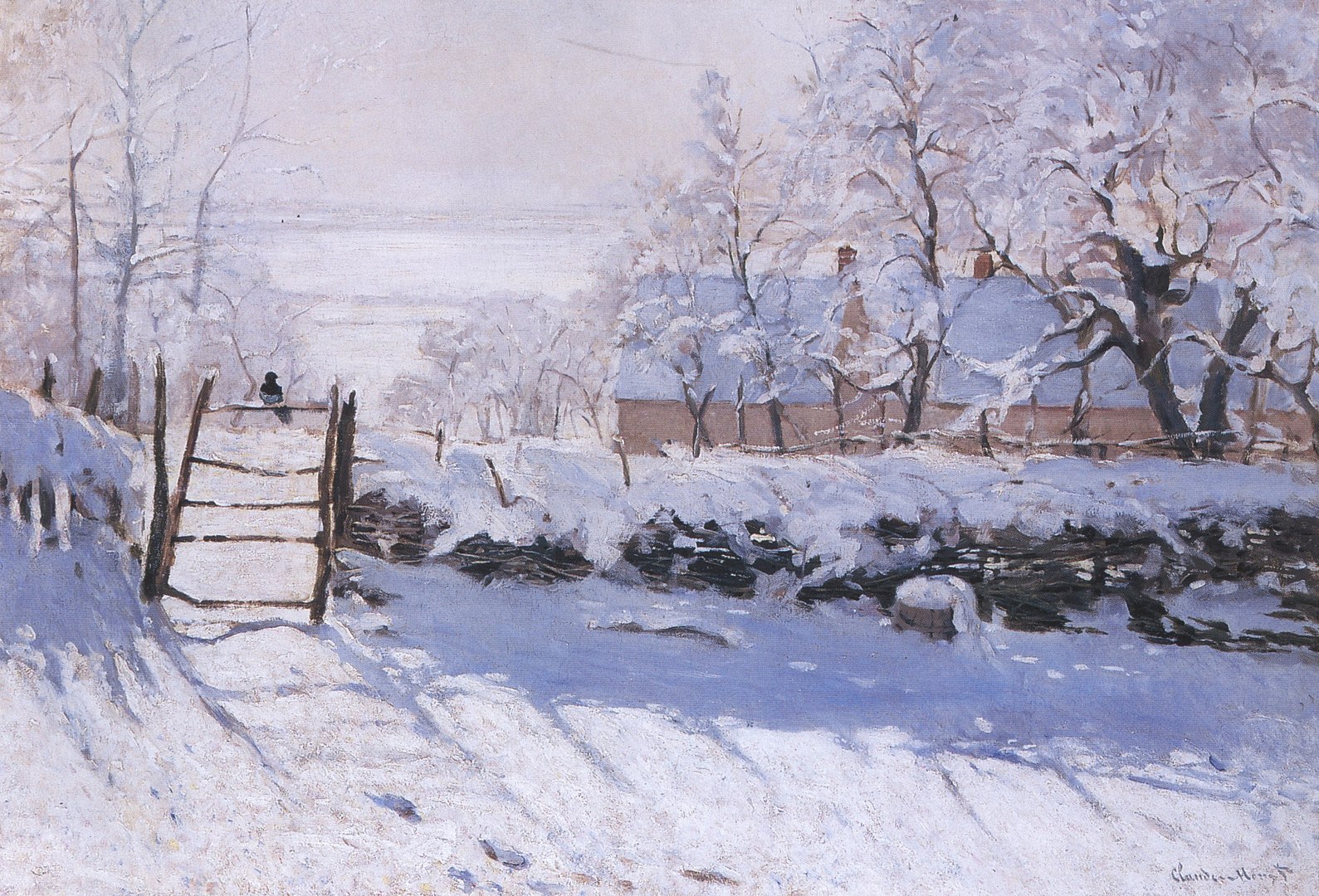Magpie

The Magpie is one of approximately 140 snowscapes produced by Monet. His first snowscape, A Cart on the Snowy Road at Honfleur, was painted sometime in either 1865 or 1867, followed by a notable series of snowscapes in the same year, beginning with The Road in Front of Saint-Simeon Farm in Winter. The Magpie was completed in 1869 and is Monet's largest winter painting. It was followed by The Red Cape (1869–1871), the only known winter painting featuring Camille Doncieux.
The canvas of The Magpie depicts a solitary black magpie perched on a gate formed in a wattle fence, as the light of the sun shines upon freshly fallen snow creating blue shadows. The painting features one of the first examples of Monet's use of colored shadows, which would later become associated with the Impressionist movement. Monet and the Impressionists used colored shadows to represent the actual, changing conditions of light and shadow as seen in nature, challenging the academic convention of painting shadows black. This subjective theory of color perception was introduced to the art world through the works of Johann Wolfgang von Goethe and Michel Eugène Chevreul earlier in the century.
At the time, Monet's innovative use of light and color led to its rejection by the Paris Salon of 1869. Today, art historians classify The Magpie as one of Monet's best snowscape paintings. The painting was privately held until the Musée d'Orsay acquired it in 1984; it is considered one of the most popular paintings in their permanent collection.
In critic Louis Leroy's review of the 1874 exhibition, "The Exhibition of the Impressionists" for the newspaper Le Charivari, he used "Impressionism" to describe the new style of work displayed, which he said was typified by Monet’s painting of the same name.
Before the 1860s and the debut of Impression, Sunrise, the term "impressionism" was originally used to describe the effect of a natural scene on a painter, and the effect of a painting on the viewer. By the 1860s, "impression" was used by transference to describe a painting which relayed such an effect. In turn, impression came to describe the movement as a whole.